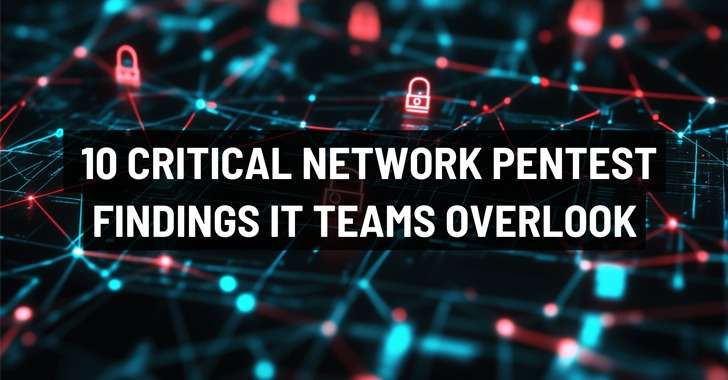You’d think firewalls and endpoint protection would be enough to keep hackers out. But after analyzing 10,000 automated penetration tests, vPenTest uncovered a harsh truth: most breaches happen because of basic oversights misconfigurations, weak passwords, and unpatched systems not Hollywood-style zero-day exploits.
Let’s break down the 10 most common (and dangerous) vulnerabilities plaguing networks today, why they matter, and how to patch them before attackers waltz in.
The Big Three Culprits
Before diving into the list, here’s why these gaps exist:
- 50% are misconfigurations: Default settings, lax access controls, or forgotten policies.
- 30% are missing patches: Known exploits left unaddressed for months (or years).
- 20% are weak passwords: Easy-to-guess credentials or services running without authentication.
Now, let’s get to the findings starting with the rarest but most severe.
10. Redis Services Without Passwords (CVSS 9.9)
Occurrence: 1.3%
Redis, a popular data-caching tool, often ships with no authentication. Attackers can steal sensitive data or hijack servers if they find an exposed instance.
Fix: Enforce strong passwords (12+ chars, mixed characters) and audit Redis configurations.
9. Firebird’s Hard-Coded Default Creds (CVSS 9.0)
Occurrence: 1.4%
Firebird database servers sometimes keep factory-set usernames/passwords. Hackers use these to dump data or even run system commands.
Fix: Change defaults immediately and monitor for unauthorized access.
8. BlueKeep: The RDP Nightmare (CVSS 9.8)
Occurrence: 4.4%
This Windows Remote Desktop flaw (CVE-2019-0708) lets attackers take full control of unpatched systems—no credentials needed.
Fix: Patch all Windows systems now. If you’re still running unsupported OSes (like Windows 7), upgrade ASAP.
7. EternalBlue: The Wormable SMB Flaw (CVSS 9.8)
Occurrence: 4.5%
Remember WannaCry? This SMBv1 exploit (CVE-2017-0144) is why it spread like wildfire. Unpatched systems are sitting ducks for ransomware.
Fix: Disable SMBv1, apply patches, and segment critical networks.
6. IPMI Authentication Bypass (CVSS 10.0)
Occurrence: 15.7%
Server management interfaces (IPMI) sometimes let attackers skip login entirely, exposing password hashes—and eventually, cleartext passwords.
Fix: Restrict IPMI access, disable it on non-critical servers, and use strong admin passwords.
5. Outdated Windows Systems (CVSS 9.8)
Occurrence: 24.9%
Windows XP/7/Server 2008 machines still lurking in your network? They’re unpatchable bullseyes for attackers.
Fix: Replace legacy systems or isolate them in a tightly controlled VLAN.
4. IPv6 DNS Spoofing (CVSS 10.0)
Occurrence: 49.9%
Windows prefers IPv6 over IPv4—so a rogue DHCPv6 server can redirect traffic to malicious DNS servers, stealing credentials.
Fix: Block unauthorized DHCPv6 servers or force IPv4 via Group Policy.
3. LLMNR Spoofing (CVSS 9.8)
Occurrence: 65.5%
When DNS fails, Windows falls back to LLMNR, broadcasting queries locally. Attackers respond with fake IPs to harvest hashed passwords.
Fix: Disable LLMNR via Group Policy or registry edits.
2. NetBIOS (NBNS) Spoofing (CVSS 9.8)
Occurrence: 73.3%
Like LLMNR, NetBIOS broadcasts name-resolution requests. Hackers exploit this to intercept SMB, HTTP, or SQL traffic.
Fix: Turn off NetBIOS in network adapter settings or DHCP options.
1. mDNS Spoofing (CVSS 9.8)
Occurrence: 78.2%
Apple Bonjour and other mDNS services let any device answer local DNS queries—perfect for credential theft.
Fix: Block UDP port 5353 or disable mDNS (unless you need it for AirPlay/printing).
The Bottom Line: Test Before Hackers Do
These flaws aren’t exotic—they’re routine oversights that attackers automate. The fix? Regular pentesting (not just annual audits) to catch gaps before they’re exploited.
Tools like vPenTest automate continuous testing, but even manual checks for these 10 issues will drastically reduce risk. Because in security, assuming you’re safe is the fastest way to get burned.
Discover more from CyberAwareHub
Subscribe to get the latest posts sent to your email.

